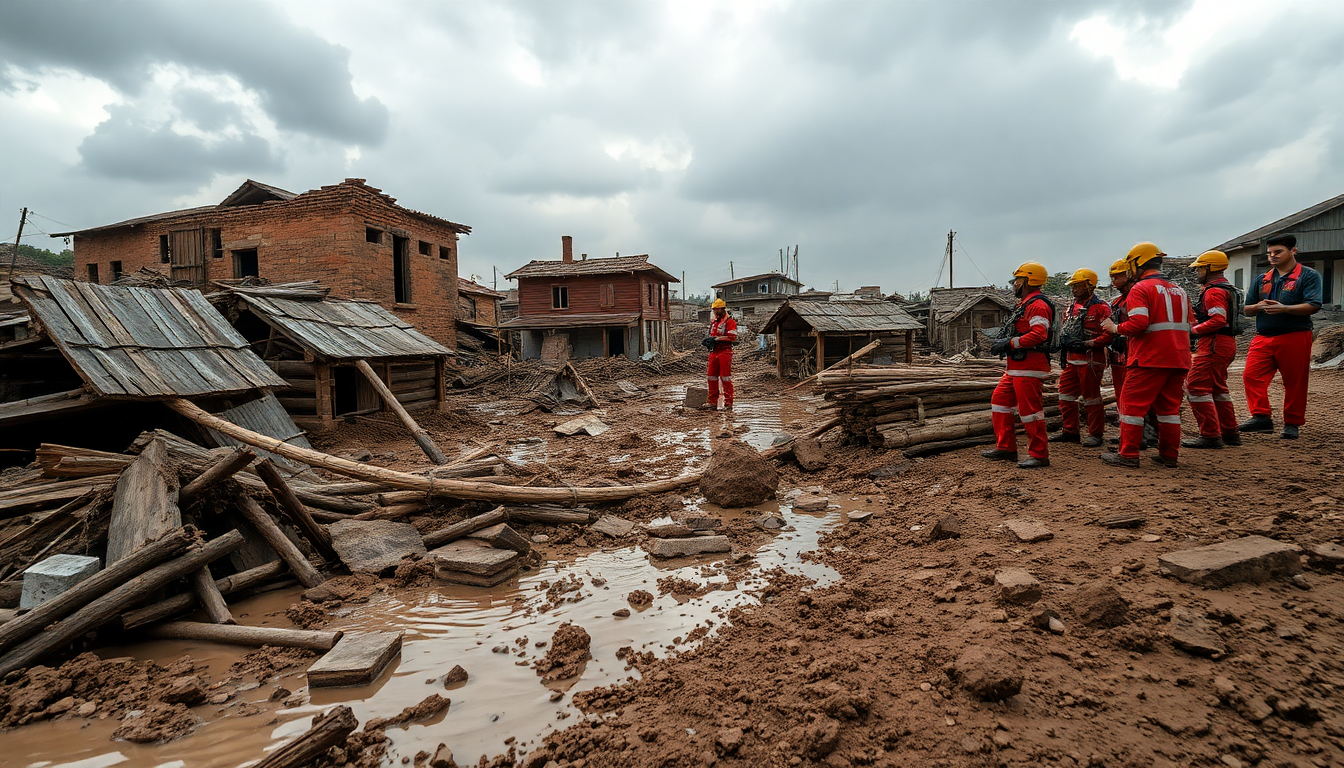Table of Contents
The recent flash floods in northern Pakistan have unleashed a wave of devastation, resulting in a tragic loss of life and property. With over 344 fatalities reported and hundreds of homes swept away, the impact of this natural disaster is staggering.
As rescuers work tirelessly to locate more than 150 missing individuals, the full scope of this tragedy continues to unfold, underscoring the region’s vulnerability to extreme weather events. How can a community rebuild when faced with such overwhelming loss?
The magnitude of the disaster
The torrential rains that triggered these floods have especially battered Khyber Pakhtunkhwa province, where the majority of the deaths—317 to be exact—occurred. The relentless monsoon rains have unleashed severe flooding and landslides, burying entire villages under rubble. In Buner district alone, at least 208 lives were lost, and rescue teams are racing against the clock to find those still unaccounted for.
It’s hard to fathom the scale of destruction in such a short time.
Asfandyar Khattak, head of Khyber Pakhtunkhwa’s Provincial Disaster Management Authority, has voiced serious concerns for the missing individuals, fearing they could be trapped beneath collapsed structures or swept away by the floodwaters.
Reports from Shangla district indicate even more people are unaccounted for, complicating the already challenging rescue efforts. What does it take to bring hope in such desperate times?
Currently, around 2,000 rescue workers are deployed across nine districts, but persistent rain continues to hinder their efforts.
The Provincial Disaster Management Authority is working diligently to recover individuals trapped under the debris, although the chances of survival for those buried remain slim. In moments like these, every second counts.
Community response and global support
In the wake of the floods, the provincial government has designated heavily affected mountainous regions—like Buner, Bajaur, Swat, Shangla, Mansehra, and Battagram—as disaster-hit areas.
The community response has been heart-wrenching, with mass funerals held for the victims, their bodies wrapped in blood-stained shawls laid out on the village grounds. How do communities find the strength to grieve and rebuild?
International support has also started to pour in, with Iran offering assistance to alleviate the suffering of those impacted by the disaster. Even Pope Leo XIV has extended prayers for the victims, emphasizing the global empathy surrounding this crisis. It’s a reminder that in our darkest hours, the world can come together.
As the monsoon season is critical for South Asia, providing essential rainfall for agriculture, it also brings significant risks. The intensity of this year’s monsoon has reportedly increased by 50 to 60 percent compared to last year, with forecasts predicting two to three more spells of heavy rainfall before September begins. Are we prepared to face the consequences of climate change?
Preparing for future disasters
Pakistan finds itself at a crossroads, grappling with the effects of climate change and the increasing frequency of extreme weather events. The floods that have ravaged the region since the start of the summer monsoon have claimed over 650 lives and left more than 920 injured. The need for improved disaster preparedness and response strategies has never been more critical. What can we do to ensure this doesn’t happen again?
In light of these devastating events, national disaster management agencies must reassess their strategies to enhance resilience and preparedness for future monsoon seasons. This means investing in infrastructure, improving community awareness, and ensuring timely response mechanisms are in place. The question is, how can we empower communities to take charge of their safety?
The ongoing challenges faced by Pakistan highlight the urgent need for comprehensive policies that tackle both immediate relief efforts and long-term strategies to combat climate change. As the community begins to recover from this tragedy, it’s essential to learn from these events to protect lives and property in the future. Together, we can build a safer tomorrow.





